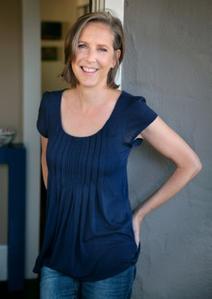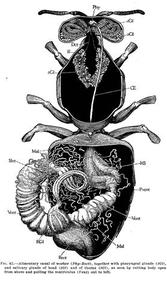
|
|
| Photo: Chris Hardy Photography | |
Mary Roach is the author of four previous books, including Stiff: The Curious Lives of Human Cadavers, and Packing for Mars: The Curious Science of Life in the Void. Her newest book, Gulp, will be published by W.W. Norton in April 2013. Roach lives in Oakland, Calif.
In your introduction, you point out that "feeding, and even more so its unsavory correlates, are as much taboos as mating or death." Why do you think this is such an off-limits and difficult topic?
We humans don't like to be reminded that we are, when you get right down to it, just another organism--another chewing, digesting sack of guts. We'd rather not think of ourselves that way.
What would you say was the most surprising thing you discovered about the alimentary canal in the course of your research? By extension, what is the most important thing we need to know about this incredibly complex system?
Here are three surprising things: according to research at the Washington Center for Obesity Research, Americans eat, on average, no more than 30 different foods on a regular basis, running through their entire repertoire in about four days. When you blush, the lining of your stomach blushes, too. There's a reason animals lick their wounds and humans have a tradition of kissing their children's boo-boos. Saliva contains potent antibacterial substances as well as nerve- and skin-growth factors. Wounds that take weeks to heal on skin will heal within a week inside the mouth. Here's something important for mothers-to-be: some food preferences develop extremely early. Traces of the flavors of the foods mothers eat are perceptible in breast milk and in amniotic fluid. Babies whose mothers ate garlic, say, or broccoli, while pregnant are more likely to accept and enjoy these foods as children. If you want your child to be an adventurous eater, eat adventurously while you're pregnant and nursing.
After investigating the digestive tract so thoroughly, do you now feel that digestion (or lack of it) is responsible for more ills than we know or will admit to?
No, I think the opposite. I think we blame food and digestion for more ills than it's fair or accurate to blame them for. Whether it's fats or carbs or dairy or now gluten, we as a culture have a tendency to single out and demonize certain nutrients. That's not to say that there are not people who have true allergies and sensitivities. But where I live (Northern California), every other person you meet claims to have one!
 Has your research and writing this book changed your eating habits or the way that you think of or take care of your own alimentary canal? How so?
Has your research and writing this book changed your eating habits or the way that you think of or take care of your own alimentary canal? How so?
Not my eating habits, but the way I think of it, yes. I have a great deal more respect for it. Let's take the lowly anus. This is a ring of muscle that has to be able to tell what's knocking at its door: Is it solid, liquid, or gas? And then selectively release either all of it or one part of it. "Think of it," says a physician whose acquaintance I made while writing Gulp. "No engineer could design something as multifunctional and fine-tuned as an anus. To call someone an a**hole is really bragging him up."
Did you find writing Gulp to be more or less challenging than your other work? In which ways?
The challenge for me, with this book was not in the writing. It's this: I don't want people to think it's a book about digestive health or some such drear. That's not me! It's a very unusual take on the subject, and, as with all my books, a little hard to sum up. --Debra Ginsberg

